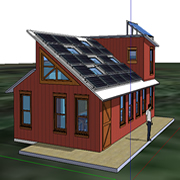By Theme:Arts and Literature | Campus Sustainability | Community Perspectives | Development | Economic Analysis | Ecosystem Analysis | Education | Energy | Environmental Justice | Food Systems | Geology of the Watershed | Green Architecture | Green Business | History of the Watershed | Invasive Species | Land Use Patterns | Public Policy | Recreation | Transportation | Water Quality
Green Architecture
 Shades of Green: The Environmental Sustainability of New Home Design and Build in
the Saratoga Springs Region
Shades of Green: The Environmental Sustainability of New Home Design and Build in
the Saratoga Springs Region
Phoebe Gallagher and David Ornvold (2010)
In the United States, homes account for twenty percent of energy consumption. Saratoga County is one of the most rapidly growing in the state of New York. This growing population will need new homes. How homes are built now will directly effect the environmental sustainability of our community. We interviewed architects and builders in the region to see how sustainable their work is and what deters them from being more efficient and sustainable. Cost and lack of knowledge were found to be the primary hurdles.Full report is not available.
Please contact Karen Kellogg for more information.
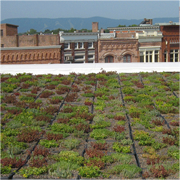 Green Roofs in the Saratoga Lake Watershed: Sedums of Change
Green Roofs in the Saratoga Lake Watershed: Sedums of Change
Isobel Flake and Devin O'Donoghue (2011)
Our project examines the perceived obstacles and benefits of green roof implementation. Through case study analyses of Wilton and Skidmore College, we evaluate the financial implications of green roofs, and their influence on stormwater management, carbon sequestration, and energy efficiency.
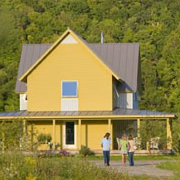 The Homeowner's Guide to Green Building
The Homeowner's Guide to Green Building
Trisha Carile and Ian Bain (2012)
Buildings in the United States are responsible for a significant fraction of our overall water consumption, energy use, greenhouse gas emissions, and waste production. By combining new interview data with data from a previous capstone project, we identified several persistent challenges to increasing green building in Saratoga County, including costs and client awareness. In response, we created an online sourcebook of regional green building techniques and products for homeowners.
Marcus Goldbas, Gwyn Harris, and Lily Alverson (2013)
We developed an architectural design for a field station that will increase the use of Skidmore’s forested properties for teaching, learning, and outdoor activities, while implementing sustainable design strategies to limit the environmental impacts on the surrounding landscape. We combined stakeholder analyses with evaluations of siting, orientation, climate, access/transportation, solar energy, passive solar heating, storm water management, rainwater catchment, day lighting, and materials, and offer a proposal to the Skidmore Community.
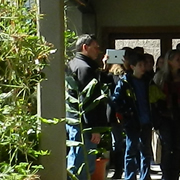
Saratoga’s First Green Home Tour: A Social Experiment
Rene deJongh, Melissa Green, and Stephanie Seidmon (2013)
As an individual, your single most significant impact on the natural environment is your choice of home and behaviors within the home. As a result, the residential sector in the United States accounts for 40% of our carbon emissions. If energy efficient homes have a smaller environmental impact and save the consumer money, why don’t more people build green homes? In this study we explored the perceptions and behaviors of Saratoga County residents about building green and retrofitting homes through interviews and surveys and how a Green Home Tour could serve as a method of education to spread awareness of green building.
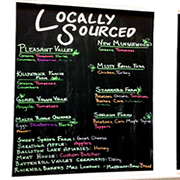
Lauren Markram, Julia Paino, and Holden Greene (2013)
Which restaurants in Saratoga County use local foods, what are their motivations, and what are the barriers that prevent expansion of this market? To answer these questions, we conducted a multi-method study combining food systems theory with market theory. Our findings suggest that Saratoga residents are interested and willing to pay more for local food, but that lack of communication between stakeholders has created market inefficiencies that must be addressed in order to facilitate greater integration of local food in Saratoga restaurants.
